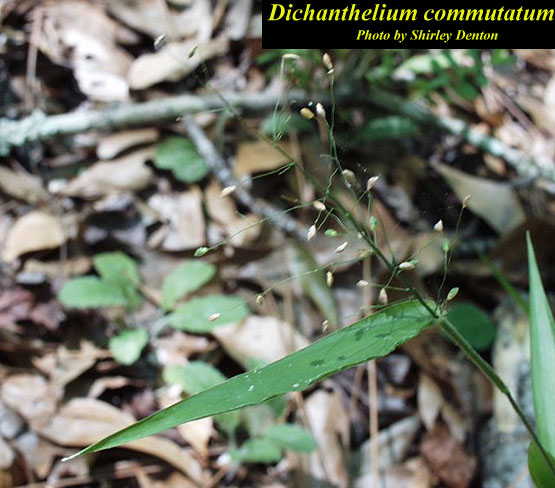Difference between revisions of "Dichanthelium commutatum"
(→Description) |
(→Distribution) |
||
| Line 27: | Line 27: | ||
==Distribution== | ==Distribution== | ||
| + | ''D. commutatum'' is found throughout the eastern United States, reaching as far west as Texas and as far north as Maine and Michigan. <ref name= "USDA"> [https://plants.usda.gov/core/profile?symbol=CEAM USDA Plant Database]</ref> | ||
| + | |||
==Ecology== | ==Ecology== | ||
===Habitat=== <!--Natural communities, human disturbed habitats, topography, hydrology, soils, light, fire regime requirements for removal of competition, etc.--> | ===Habitat=== <!--Natural communities, human disturbed habitats, topography, hydrology, soils, light, fire regime requirements for removal of competition, etc.--> | ||
Revision as of 12:53, 30 May 2018
| Dichanthelium commutatum | |
|---|---|

| |
| Photo by the Atlas of Florida Plants Database | |
| Scientific classification | |
| Kingdom: | Plantae |
| Division: | Magnoliophyta - Flowering plants |
| Class: | Liliopsida - Moncots |
| Order: | Cyperales |
| Family: | Poaceae |
| Genus: | Dichanthelium |
| Species: | D. communtatum |
| Binomial name | |
| Dichanthelium commutatum Schult. | |

| |
| Natural range of Dichanthelium commutatum from USDA NRCS Plants Database. | |
Contents
Taxonomic Notes
Synonym: none
Variety: D. commutatum var. ashei (J.A. Shultes) Gould
Description
D. communtatum is a perennial gramioid of the Poaceae family that is native to North America. [1]
Distribution
D. commutatum is found throughout the eastern United States, reaching as far west as Texas and as far north as Maine and Michigan. [1]